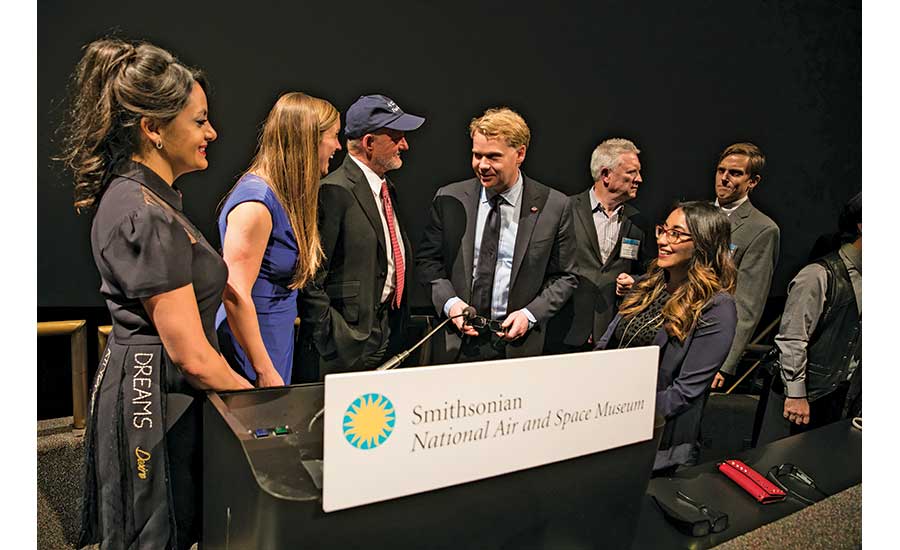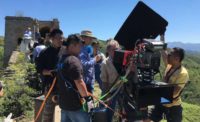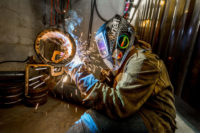How does an engineering association come to partner with a prominent IMAX movie producer to create a film to inspire kids to pursue industry careers?
The premiere of “Dream Big: Engineering Our World” at the Smithsonian National Air & Space Museum in Washington, D.C., on Feb. 17 was the culmination of more than five years’ work by the American Society of Civil Engineers and MacGillivray-Freeman Films, supported by presenting sponsor Bechtel Corp.
With stunning 3D special effects for the big screen, the movie takes viewers on a global journey of large and small construction projects to learn how engineers solve problems around the world. But the focus is not the projects themselves.
Director Greg MacGillivray says the filmmakers “decided to tell the story of four individuals and get into the heart of why they became engineers and why they think that job is so important to the world.” As a little girl in Turkey, engineer Menzer Pehlivan had wanted to be an actress until she lived through a magnitude-7.6 earthquake; then her dream shifted to making communities safer through engineering.
Now a geotechnical engineer at CH2M in Seattle, she is shown in Nepal after its massive 2015 quake, collecting data for the National Science Foundation as part of an extreme-event reconnaissance team. Avery Bang, CEO of the nonprofit Bridges to Prosperity, is filmed helping a community in Haiti to build a pedestrian bridge across a river where villagers had drowned. She hopes the audience will say, “I can do that. I can use my creativity to help the world.”
Roots of the Dream
The project grew out of a 2011 content symposium at the Liberty Science Center in Jersey City, N.J., that brought together engineers, museum executives and film professionals to talk about a giant-screen cinema experience to interest students in careers in science, technology, engineering and math (STEM). For a generation of young people who grew up interacting with screens, the way to connect is “to use the biggest screen we could find,” said Jon Magnusson, president of the ASCE Foundation, a major donor that also led the fund-raising effort.
Additional major support came from the National Council of Examiners for Engineering and Surveying and the United Engineering Foundation.
From the outset, “Dream Big” was conceived as a $10-million IMAX film with a completely integrated $5-million educational outreach program. Materials, developed by a team of museum educators and technical advisers, include 10 educational videos that detail engineering concepts and are connected to the movie by opening footage, grade-level lesson plans and ideas for hands-on activities for schools and museums. All materials are available at no charge on DiscoverE, the website (and new name) of the former National Engineers Week Foundation.
The film, whose opening was the kickoff for National Engineers Week 2017, now is playing or soon will be, in 55 IMAX theaters in the U.S. and eight in Canada and Mexico.
From audience topic testing to ASCE leadership buy-in to finding sponsors, “it was like driving down a city street and having all the traffic lights turn green,” says Jane Howell Lombardi, ASCE director of communications. The Stephen Bechtel Jr. Foundation provided feasibility funding, with additional support from the contractor. Charlene Wheeless, Bechtel vice president for global corporate affairs, sees the film and education effort as a follow-on step to a National Academy of Engineering study that found “kids want to be inspired.”
Click here to read how NYC students found the film at a pre-screening last month.
CEO Brendan Bechtel sees the project as a “game-changer in the way we promote engineering.” A film can tell “vivid stories about how we use the skills of engineering” to improve the world, he said at the film’s premiere.
Click here to view and hear Brendan Bechtel's insights on the next generation during his keynote address at ENR's 2016 Global Construction Summit.
Tom W. Smith, ASCE executive director, says sponsors will measure the film’s success by its longevity in theaters. “So far, the feedback has been very favorable with that primary K-12 audience,” he adds.





Post a comment to this article
Report Abusive Comment